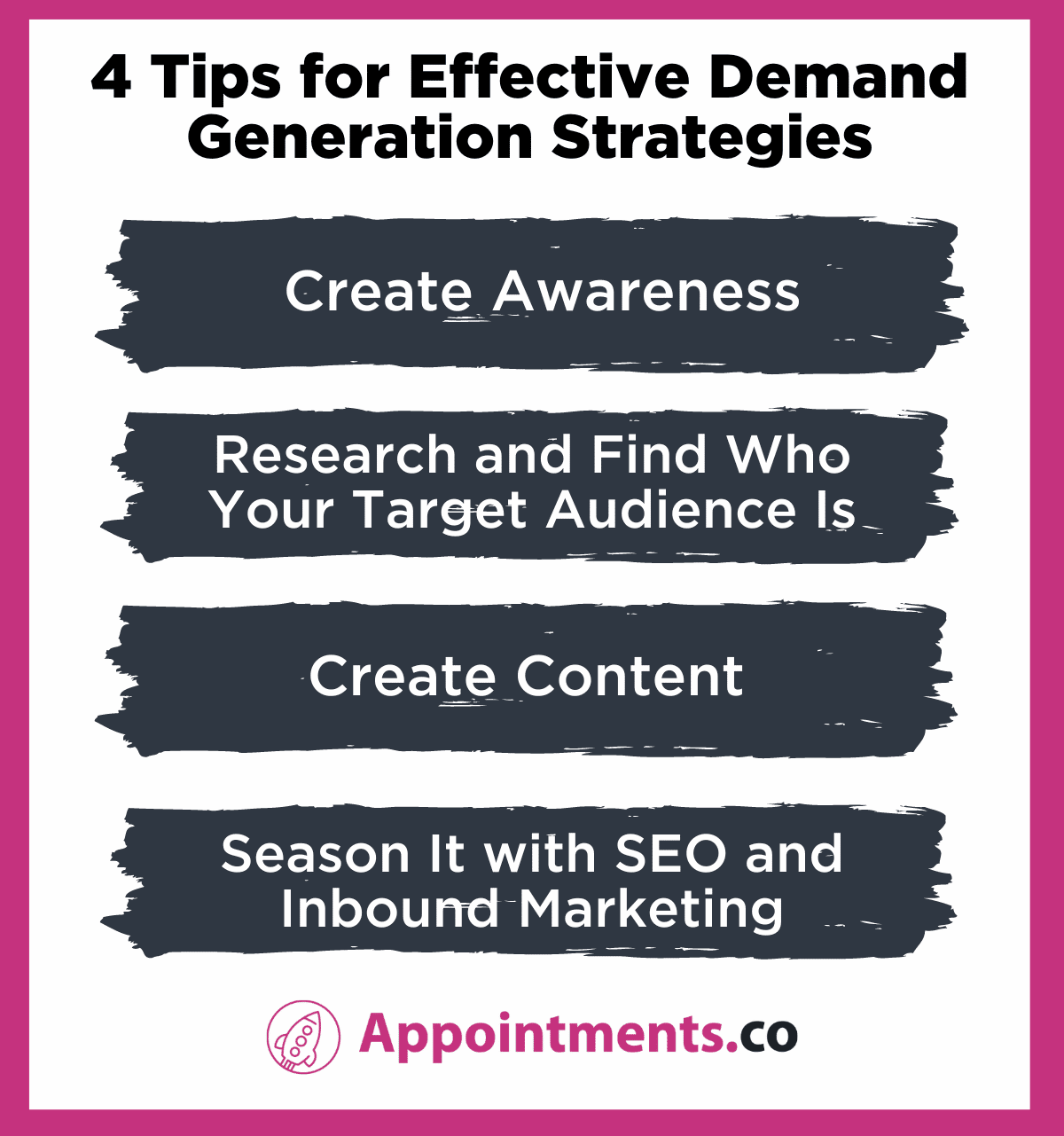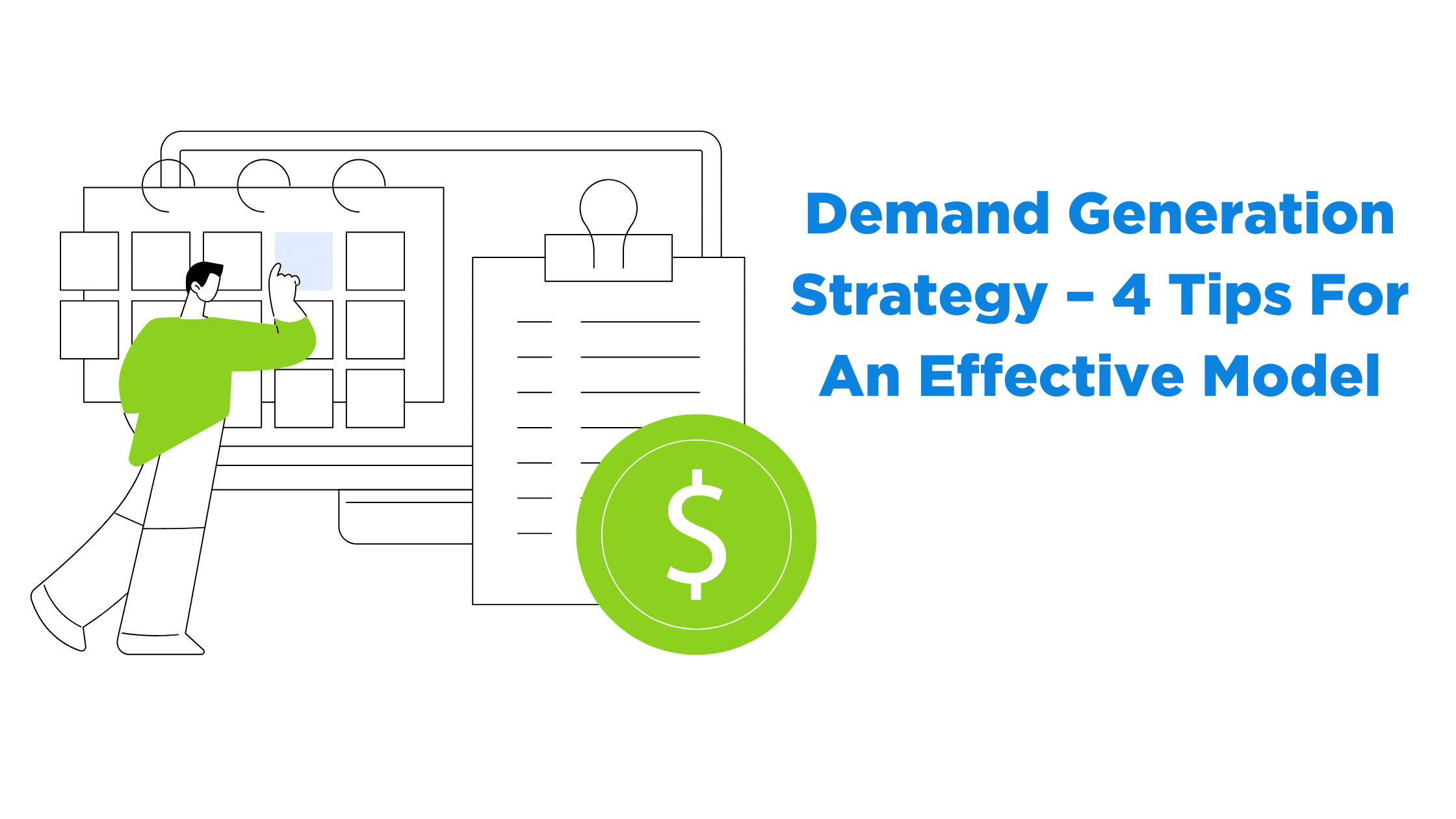Demand generation strategy creates awareness for your business, attracting prospects and nurturing them into leads. Demand generation is the biggest challenge for new businesses, particularly startups. It’s different from lead generation as it is a process that requires involvement from the beginning of the campaign until they turn to clients, which makes it challenging for new brands.
You need to design a demand generation strategy to take your business to your prospects. Your sales and marketing team must be aligned with each other to reap the benefits that you desire. Demand generation strategy involves identifying potential prospects based on their initial behavior and guiding them through a nurturing process so that the sales team receives high-quality, highly-qualified leads.
In this article,
- What Is Demand Generation?
- What Is Demand Generation Strategy?
- How Do You Measure Demand Generation Strategy
- What are Some Effective Demand Generation Strategies – 4 Tips
What Is Demand Generation?
Demand generation is a process that creates an awareness of your business and the services that you offer. The goal is to reach your audience and thereby grow your business. It’s basically the actual implementation of your marketing and sales efforts that covers your prospect’s journey to becoming your client.
Demand generation is about selling the right product to the right client. It’s no longer that glittery and eye-catchy television ad that is just void and doesn’t deliver the service it promised. Demand generation is about informing your clients what you actually do and how it perfectly fits your client’s needs.
To get customers to your business, you need to follow a proper demand generation strategy. Customers don’t just buy your services. Some who might need your service will come to you. But remember, you are not alone. You have fierce competition.
Take a gradual and comprehensive approach to get solid leads for your business. In this guide, we’ll walk you through how to identify your audience that is likely to identify with your service with their needs.
Then slowly impress them with your past achievements and testimonials, then lead them through the funnel journey until they become your proper clients.
Align your business goals with your marketing and sales goals, and measure success using KPIs as you move down the funnel.
What Is Demand Generation Strategy?
A strong demand generation strategy builds brand awareness and authority and produces thoughtful, engaging content that drives interest and cultivates leads. Demand generation (or demand gen) is essential to a healthy business-to-business (B2B) sales and marketing strategy.
Knowing what demand generation strategy is, let’s learn how to create an effective strategy that your marketers can follow to find and nurture your leads and bring success to your business.
How Do You Measure Demand Generation Strategy
Would you find it great if your demand generation strategy doesn’t yield quality results? Would you just do it for sale? Whatever strategy you use, it is always crucial to measure the success of the strategy. Here are some of the key performance indicators (KPIs) that would help you visualize effective results. These KPIs are the metrics that measure the quality, time, and revenue generated.

Qualified Leads
The first criterion is measuring the lead’s quality generated. Based on the current state of the lead and their interest in your brand, you can classify them as MQL or SQL. The leads who show more interest in your product or service, have all the potential and need to purchase are sales-qualified leads. On the other hand, the leads are the potential customers, but they are not yet fully convinced to become your customers. These leads are marketing-qualified. Through effective marketing campaigns, demand generation strategy, and lead nurturing, you can convert them.
ROI
These attempts and efforts are taken to fulfill the ultimate goal of improving your returns. Sometimes the leads you acquire might convert but may not be repeat buyers. So, make sure the leads are capable of opting for your service. Also, measure your potential to fulfill their requirements. Putting more effort into a client and not being able to make an impact on them may not let you increase your returns on investment.
Sales Cycle Length
Most marketing campaigns say the time taken to identify a lead and close a deal with them is much longer. Most business companies search for an effective lead generation service, as they can not afford months or days to convert leads. So, measuring how long the sales cycle runs is highly important. Measuring the time taken and comparing it with the lead’s quality can help you decide on prioritizing leads.
Conversion Rate
You might have acquired thousands of leads, but what if none of them got converted as your customer? Anybody can come across your brand through a social media post, blog, or form fills. But most of these leads are less likely to get converted. The sales campaign with a high conversion rate is a success because your demand generation strategy worked well and made real money.
What are Some Effective Demand Generation Strategies – 4 Tips
Your demand generation strategy must span multiple touchpoints, campaigns, and pieces of content that include just about anything your brand does to generate buzz, awareness, and recognition.

1. Create Awareness
A great demand generation strategy is to create content that talks about your brand. One of the demand generation strategies is content marketing, where the marketer posts blogs on your website and social media platforms. The aim is not just driving traffic to your website and making them perform the intended CTA, but the content must build trust, foster relationships, and nurture your leads.
Your blogs and social media posts must make people want your product or service more. It must understand your customer’s pain points and provide direct answers to your audience’s queries.
For your product to be in demand and for your customers to look for you, they must first have a need. Some of your audience might have a need but might not be aware that there is a need for your particular services. That’s where your content marketing effort and demand generation strategy come in handy. They educate your audience on what they need to succeed and what you can offer.
A few of your customers might be aware of their needs, but they don’t know that you exist. You need to create awareness so they know you and get the urge to come to you. Now, here, you need to assess what depth of the sales funnel they are in and must provide the appropriate content for them to understand.
Also, you must have the right demand generation strategies that address that part of the audience who can become your potential clients but are unable to make the right decisions. Your content marketing strategy must encourage them.
2. Research and Find Who Your Target Audience Is
The essential part of the demand generation strategy is offering solutions to each prospect’s unique pain points, buying readiness, content preferences, and where they are in the sales cycle. The best way to ensure that your demand generation strategies work is to frame these questions and equip yourself with the answers.
- Who are your ideal prospects?
- How do they make buying decisions?
- What are their pain points?
- What questions do buyers typically have at each stage in the sales cycle?
3. Create Content
Create content that answers and educates your audience. This is the starting point of their funnel journey. The content educates people, generates interest, and when a demand generation strategy is done right, it can position your brand as a thought leader or a go-to resource in your niche.
Your blog articles, infographics, and podcasts published on your marketing platforms are a long-time investment and provide information about your services whenever they search for them. All it takes is a consistent effort to update older blogs and repurpose content as required.
Further, your blog post’s purpose must be to
- Publish facts and figures.
- Incorporate original and researched data.
- Keep abreast of emerging trends and technologies.
- Have insights into emerging trends.
Inarguably, ask yourself these questions: why should someone spend their time reading your blog, and how do you justify how you stand out from your competitors?
4. Season It With SEO and Inbound Marketing
Attracting high-quality leads and converting them into customers requires a combination of SEO best practices, a well-executed keyword strategy, and an inbound content strategy that captures audience intent.
Today’s version of inbound marketing goes beyond personas and keywords. Instead, content should center around answering real users’ questions while focusing on long-tail, conversational keywords. Brands must focus on understanding the “why” behind customer behavior at every stage in the funnel.
Key Takeaways
Demand generation strategy is an integrated marketing approach to drive awareness about your business. Awareness is created using content marketing strategies by publishing blogs, videos, podcasts, and hosting webinars. When your content delivers the right answers to your customers in the sense that your product addresses their pain points, they may automatically reach out to you for solutions.
This brings them to the middle of the funnel, and to further convert them into leads, interest them with your previous success with the help of case studies to help them understand how you work and stand out among your competitors.
Reach out to us if you are looking for an agency to outsource your appointment setting, engage potential customers, and qualify them as leads.
Frequently Asked Questions
1. What are some of the best demand generation strategies?
Some top demand generation strategies include content marketing, paid advertising, and account-based marketing. Blogs, webinars, free downloadables, and SEO bring awareness to your business.
2. What is the difference between demand generation and lead generation?
Lead generation is a part of demand generation. Lead generation focuses on converting potential customers into leads, whereas demand generation extends from invoking interest in the customers’ minds.
Demand generation focuses on providing the right information to their potential customers, bringing awareness, and slowly converting them into leads as they move past the sales funnel.
3. What are B2B demand generation strategies?
B2B demand generation strategies aim to drive awareness and demand for a product or service in the B2B marketplace. The marketing team and the sales team align with each other and explore new opportunities in the market.
Related Posts:
- 10 Demand Generation Metrics You Need to Measure in 2022
- Demand Generation Funnel – 3 Stages You Need to Know
- Top 10 Demand Generation Best Practices to Maximize ROI
Illustrations by Storyset



